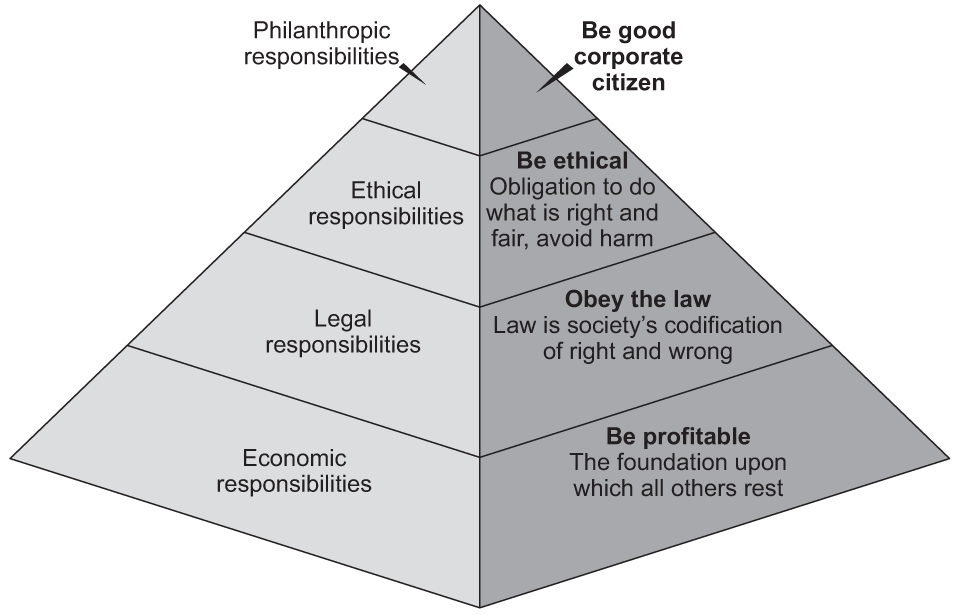Specifications that use this resource:
Teaching guide: Carroll's corporate social responsibility pyramid
Outlines the different possible aspects of social responsibility for a business.
Model/theory

Key points
According to Carroll, 'corporate social responsibility involves the conduct of a business so that it is economically profitable, law abiding, ethical and socially supportive'. Carroll produced a pyramid that identifies the different types of obligations that society expects of businesses.
The layers of the pyramid are:
Economic responsibilities
These include providing rewards to the owners, paying employees fairly and selling products at a fair price to consumers. A business has an economic responsibility to survive.
Legal responsibilities
This means that businesses should follow the law and not act illegally.
Ethical responsibilities
A business will have responsibilities over and above their legal requirements. Managers may decide to do the 'right thing'.
Philanthropic responsibilities
This focuses on businesses actively trying to help society, for example, by improving the quality of each employee’s working life.
When you can use this
When discussing the responsibilities a business might accept, you might discuss what determines whether a business only accepts economic responsibilities or whether it adopts a philanthropic approach and if so why?
In addition, what are the possible implications of these choices?
Where it's been used
-
Q6, A-level paper 1 2017
-
Q5, A-level paper 3, SAM set 1
-
Q14, A-level paper 1, SAM set 2